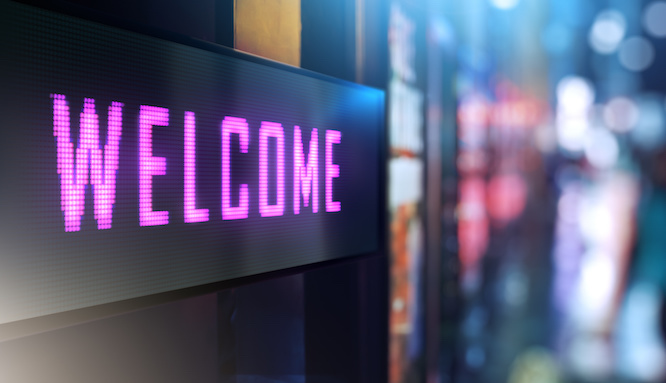Employers moving to fully digital onboarding are making efficiency gains while finding new ways to stay ‘personal’, a specialist says.
Job offers have overall reduced but contactless onboarding – where offers and all related information is provided to candidates electronically – is definitely on the rise, says HROnboard founder and CEO Peter Forbes.
“People don’t want to be touching forms and packages if they don’t need to”, and postal services are experiencing delays, he tells Shortlist, noting that hospitals are key among the increase in uptake while they scramble to hire more health professionals.
Contactless is, however, “a terrible word, because you don’t want to take out the personal side,” Forbes says.
It’s therefore important to find the balance between “adapting to the world we now find ourselves in, and making sure that you can create a personalised experience, even if you are hiring 500 people per year.”
This means adjusting the parts of employers’ onboarding journeys that are designed to help new hires understand the business culture and objectives, that would normally be facilitated by half-day workshops or coffee meet-and-greets with department heads.
Now, in line with social distancing requirements, many employers are moving those onboarding activities online with the help of tools such as Zoom and Google Hangouts.
Meanwhile organisations are also moving up some of the onboarding information they usually “drip feed” to new hires over the first six-to-eight weeks, and “bringing it forward into the first week, or even before day one”.
The key is to keep the human element in onboarding.
Here are some recommended steps for digitally onboarding new hires.
1. Send necessary documents to sign digitally ahead of time
Enabling your new hires to complete the new starter formalities online empowers them to take care of all paperwork ahead of time. From signing their letter of engagement to acknowledging your workplace policies, and completing payroll paperwork digitally before they start ensures they are not greeted with a stack of paperwork on their first day. This ensures their first day can be dedicated to meeting their team and learning about their role which makes for a more memorable first day on the job.
2. Minimise manual process-driven tasks
Create templates to free up resources from repetitive paperwork and minimise the potential for human error. As an example, at beauty retailer Sephora, it used to take two people two weeks to complete onboarding paperwork. Their new digital onboarding platform takes just 60 seconds.
3. Establish meetings and introductions
Another important factor in helping a new hire settle into their roles is building rapport with their new colleagues. All new hires need a support network to help show them the ropes and provide guidance.
Automate workflows to trigger all the necessary team introductions and check-ins, and even assign a buddy or mentor. This allows you to keep your new hires busy with a highly-structured schedule without having to personally check schedules and individually set up meetings with their team.
4. Set objectives and timelines
Setting expectations and introducing goal setting for your new hire’s first 30, 60 and 90 days at in your workforce is fundamental to helping new hires settle in.
Rather than leaving them to figure out what is expected and how they can be successful in their new workplace, make it plain as part of your digital onboarding. You can create content that explains how they can best achieve these goals, trigger training modules, and connect them with the staff members who can help them along the way.
A quality digital onboarding platform also allows you to easily track the progress and status of their training since.
5. Make it personal and engaging
To engage your new starters, use interactive video or games as a fun way to get your new hires in the know about any behaviours and language that are unique to your way of working. Include practical things like seating layout and names and descriptions of team members. Having your new hires interact with the information via an onboarding platform will help them remember the information.
6. Create a paper trail
Creating a digital paper trail allows you to quickly identify any documents you may need to chase an employee to sign, or confirm when information has been sent and accessed.
7. Gain compliance peace of mind
With all your new hire documents, policies, and training documented online, a digital onboarding program helps you maintain employee confidentiality and compliance. By centralising all new hire paperwork digitally, you can keep sensitive information secure, and still easy to access when you need it.
Employers managing digital onboarding well also tailor onboarding journeys to the job type, office location and the culture of the business area or team.
For example, if you’re an organisation with offices around Australia, the culture, terminology and ceremonies you have in the Sydney office might be very different from the Perth office.
Companies that have personalised the journey will include introduction videos featuring the team leader or department head, outlining the work they do and what they want to achieve.
Source
Contactless onboarding reigns amid social distancing
Shortlist
7 ways digital onboarding will boost productivity
Flare HR


1 comment